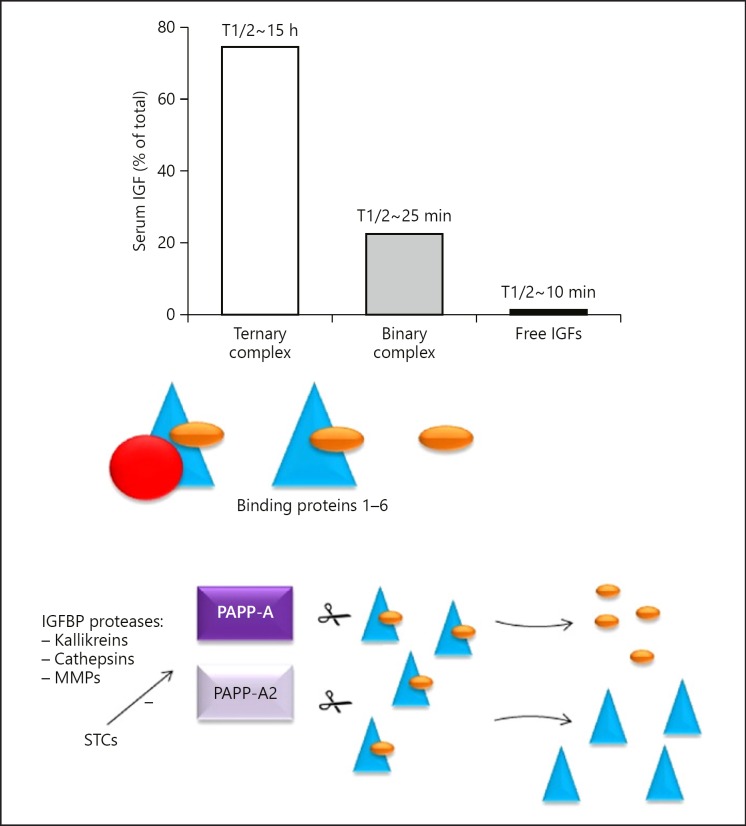Fig. 2.
Average distribution of IGFs among ternary and binary complexes and the unbound fraction in the circulation of healthy subjects. Stable ternary 150 kD complexes are formed by an IGF, IGFBP-3 (to a lesser extent also with IGFBP-5) and ALS. In addition, there are binary 40–50 kD complexes consisting of an IGF and an IGFBP with a relatively shorter half-life in the circulation. Only a very small fraction of the IGFs are present in the free unbound form. IGFs are released from the complexes by various types of IGFBP proteases (...) which include the (MMPs) PAPP-A2 and A. These proteases cleave IGFBP-3 and-5 (PAPP-A2) and IGFBP-2, -4, and -5 (PAPP-A) and are thought to play an important role in IGFBP proteolysis. STCs inhibit the proteolytic activities of PAPP-A and PAPP-A2, thereby resulting in decreased levels of free IGF-1 and, consequently, decreased IGF-1 signaling. MMP, matrix metalloproteinases; IGF, insulin-like growth factor; IGFBP, IGF-binding proteins; PAPP, pregnancy-associated plasma protein.

